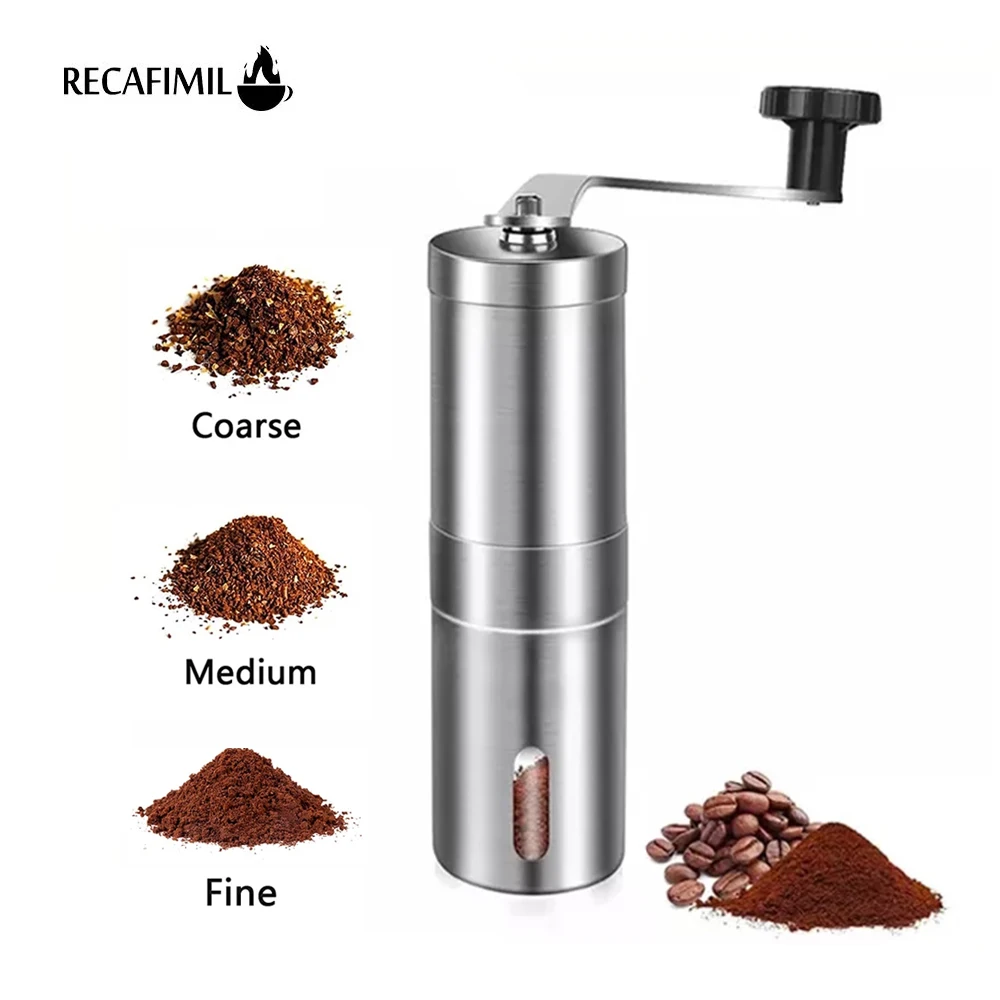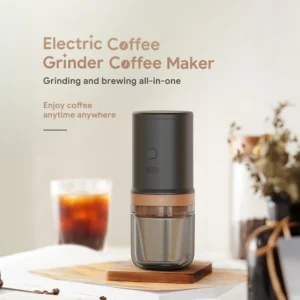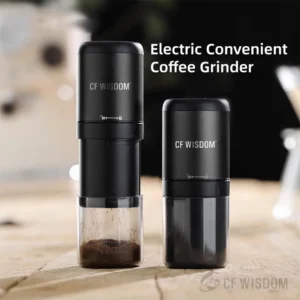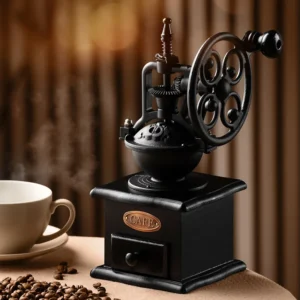Understanding the AeroPress as Your Travel Coffee Companion
The AeroPress has revolutionized how coffee enthusiasts enjoy their brew while traveling. This remarkable coffee maker stands at just 8.5 inches tall, measures 4 inches in diameter, and weighs a mere 0.4 pounds (181 grams). Its compact design makes it an ideal companion for anyone who refuses to compromise on coffee quality while away from home.
What makes the AeroPress particularly suited for travel is its winning combination of features:
- Incredibly lightweight and durable plastic construction
- Quick brewing time of just 1-2 minutes
- Simple cleanup with minimal water required
- Versatility to brew American-style coffee, espresso-style, or even cold brew
- Small enough to fit in a backpack, suitcase, or even a large purse
The magic of a perfect cup of AeroPress coffee doesn’t just come from the device itself—it requires the right grind size to unlock its full potential. Understanding the connection between grind precision and brewing quality becomes even more critical when brewing conditions change during travel.
Whether you’re brewing in a hotel room, at a campsite, or on a mountain summit, this guide will help you master the art of AeroPress travel brewing by focusing on the most crucial yet often overlooked element: the perfect grind size.
Why Grind Size Makes or Breaks Your AeroPress Coffee
The relationship between coffee grind size and flavor is both scientific and surprisingly simple. Grind size directly controls how quickly flavor compounds extract from your coffee—acting like the dial that determines whether your cup tastes delicious or disappointing.
Coffee extraction follows a predictable pattern: water pulls compounds from coffee grounds in a specific sequence. First come the acids and fruit notes, followed by sweetness and balance, and finally the bitter compounds. The size of your coffee grounds determines how quickly this extraction happens:
- Too coarse: Water flows through quickly, resulting in under-extraction. Your coffee tastes sour, weak, and lacks complexity.
- Too fine: Water moves slowly or gets trapped, causing over-extraction. Your coffee tastes bitter, harsh, and astringent.
- Just right: Water extracts the perfect balance of compounds, creating a sweet, flavorful, and satisfying cup.
The AeroPress uses a unique brewing method that combines immersion (like a French press) with pressure (similar to espresso). This hybrid approach makes it particularly sensitive to grind size adjustments.
Understanding how grind size affects espresso and similar pressure-based brewing methods helps explain why the AeroPress performs so differently with various grind sizes. When traveling, this sensitivity is amplified by changing water quality, uneven heating methods, and time constraints—making your grind size decision even more critical for achieving a reliable cup.
The Ideal AeroPress Grind Size: Finding the Sweet Spot
For standard AeroPress brewing, the ideal grind size falls somewhere between medium-fine and medium—similar to table salt or fine sand. This size range, approximately 600-800 microns in particle diameter, allows for optimal extraction within the typical 1-2 minute brewing time of an AeroPress.
Using a grind size within this range helps you achieve a balanced cup that brings out the coffee’s natural flavors without excessive bitterness or sourness. However, it’s important to understand what happens when you stray from this range:
| Grind Size | Visual Comparison | Result | Risk |
|---|---|---|---|
| Too Fine | Flour, powdered sugar | Over-extracted, bitter | Difficult plunging, clogged filter |
| Ideal Range | Table salt, fine sand | Balanced, flavorful | None (optimal brewing) |
| Too Coarse | Sea salt, raw sugar | Under-extracted, sour | Weak, watery coffee |
Your personal preference and specific brewing recipe can shift your ideal point within this range. The standard method typically works best with a medium-fine grind, while recipes with longer steep times might benefit from a slightly coarser grind.
The key is consistency. Understanding espresso grind settings for the perfect shot reinforces how critical uniform particle size is for even extraction. When each ground extracts at roughly the same rate, you achieve harmony in your cup rather than competing flavors from over- and under-extracted particles.
Travel Brewing Challenges: Why Grind Matters Even More On The Go
When you take your coffee routine on the road, you introduce variables that don’t exist in your carefully controlled home setup. These travel-specific challenges make proper grind size even more crucial:
- Variable water temperatures: Without your precise electric kettle, water might be too hot or too cool, affecting extraction rates
- Inconsistent water quality: Different mineral content in water across locations dramatically impacts extraction
- Time constraints: Morning camp departures or hotel checkouts often rush your brewing process
- Limited equipment: You may not have access to scales, thermometers, or other brewing tools
- Cleaning limitations: Disposing of grounds and thoroughly cleaning equipment can be challenging
These factors compound to make your AeroPress travel grind guide essential knowledge. When you can’t control all brewing variables, having the right grind becomes your anchor for consistency.
For example, if you’re using hotel water that’s not quite hot enough, a slightly finer grind can compensate by increasing extraction efficiency. Conversely, if you’re rushing and can’t measure brew time precisely, a slightly coarser grind provides more forgiveness by slowing extraction.
By understanding how grind size interacts with these travel challenges, you can adapt your approach to deliver consistently excellent coffee regardless of where your adventures take you.
The Perfect Travel Grind: Adapting for Different Brewing Methods
Different AeroPress brewing methods require specific grind adjustments to achieve optimal results, especially in travel scenarios. Here’s how to adapt your grind for popular AeroPress techniques on the go:
| Brewing Method | Recommended Grind | Description | Travel Considerations |
|---|---|---|---|
| Standard Method | Medium-fine | Similar to table salt | Works well with variable water temperatures |
| Inverted Method | Medium | Slightly coarser than table salt | Better for longer steep times in hotel settings |
| Quick Method (1-minute brew) | Medium-fine to fine | Between table salt and espresso | Perfect when you’re in a hurry to catch transportation |
| Cold Brew Method | Medium-coarse | Similar to coarse sand | Ideal for hot climates where hot water is limited |
For the standard method, a medium-fine grind allows for the ideal 1:30 brew time while accounting for potentially variable water temperatures. The pressure created during plunging helps ensure proper extraction even when conditions aren’t perfect.
The inverted method, where the AeroPress is flipped during brewing, benefits from a slightly coarser grind since the full immersion brewing typically involves longer steep times. This is particularly useful in hotel settings where you might be multitasking while preparing for the day.
Understanding AeroPress grind settings for travel means recognizing that each brewing method has its own ideal grind profile. For example, when using the quick method with a one-minute brew time, a finer grind compensates for the shortened extraction period—perfect when you need to pack up camp quickly or rush to a morning meeting.
Portable Grinders: Your Key to Fresh Travel Brewing
Nothing elevates your travel coffee experience like freshly ground beans. Portable grinders are the optimal solution for travelers seeking cafe-quality coffee anywhere in the world. These compact tools unlock flavors that pre-ground coffee simply cannot maintain.
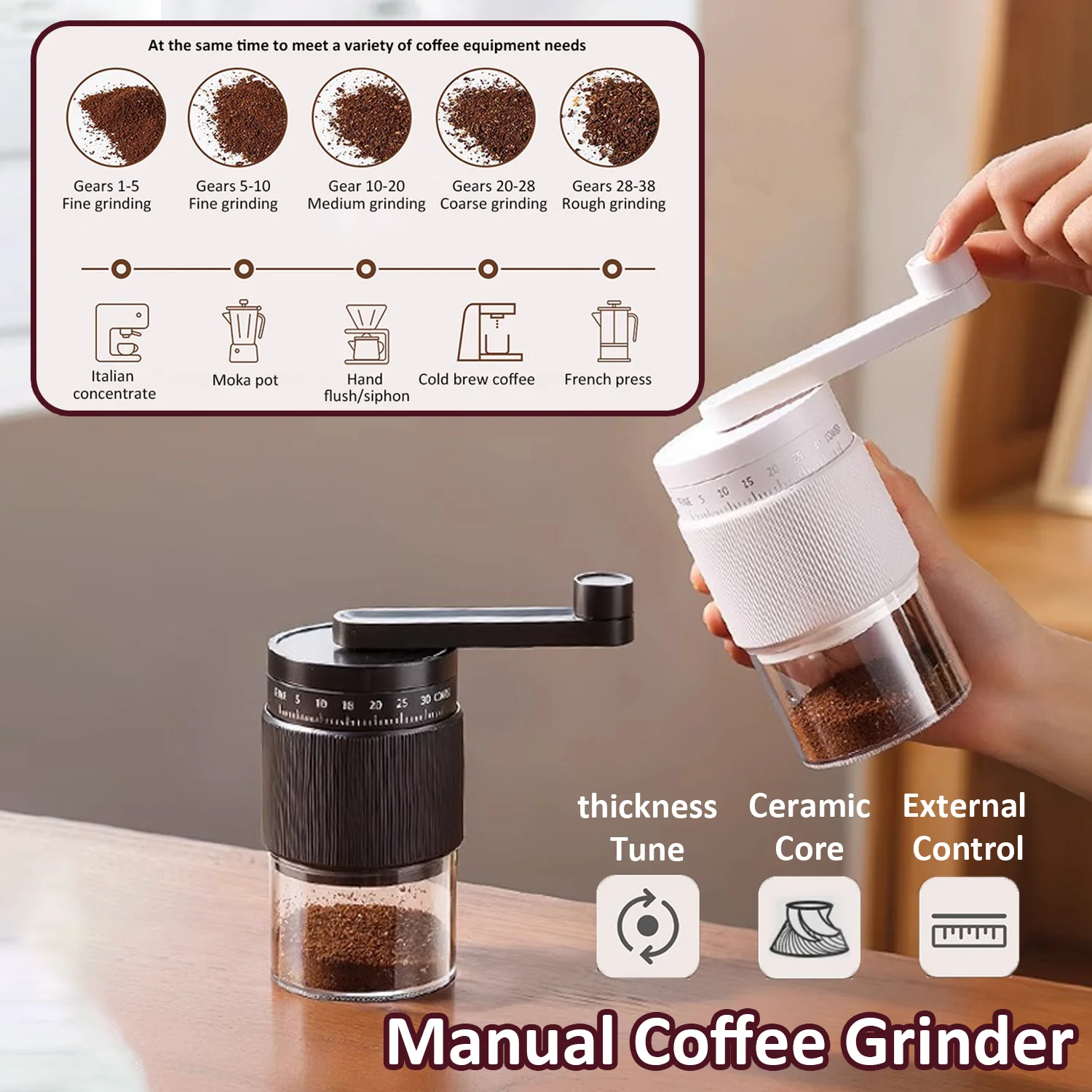
When selecting a travel coffee grinder for your adventures, consider these essential features:
- Size and weight: Look for grinders under 6×2 inches (15×5 cm) that easily fit in a backpack or carry-on
- Burr quality: Ceramic or stainless steel burrs provide consistent grind particles critical for even extraction
- Adjustment mechanism: Clear, repeatable settings allow you to dial in your perfect grind anywhere
- Durability: Robust construction withstands being jostled in luggage or backpacks
- Ergonomics: Comfortable grinding reduces fatigue when electricity isn’t available
- Capacity: Ability to grind enough for 1-2 cups in a single filling saves time
The benefits of bringing a portable grinder extend beyond just taste. Whole beans stay fresh significantly longer than pre-ground coffee—often maintaining quality for 2-3 weeks compared to just days for pre-ground. This means you can bring enough beans for an extended trip without sacrificing flavor.
Additionally, a quality grinder gives you the flexibility to adjust your grind based on changing conditions. Brewing at high altitude? Adjust slightly finer to compensate for the lower boiling point of water. Rushed morning? Go a bit finer for a quicker extraction.
Pre-Grinding Strategy: When You Can’t Bring a Grinder
While freshly ground coffee is ideal, sometimes bringing a grinder isn’t practical—particularly for ultralight backpacking, brief business trips, or when space is at an absolute premium. In these cases, a solid pre-grinding strategy can still deliver excellent results.
For the best pre-ground AeroPress coffee while traveling:
- Grind beans immediately before your trip, ideally within 12-24 hours of departure
- Grind slightly finer than your normal preference to compensate for flavor degradation
- Store in airtight containers with one-way valves to release CO2 without letting oxygen in
- Package in individual portions (per brew) to minimize exposure of unused grounds
- Keep away from heat, moisture, light, and strong odors during travel
When using pre-ground coffee, adjust your AeroPress technique slightly to compensate. Consider increasing your coffee-to-water ratio by about 10% to account for the loss of volatile compounds. Additionally, reducing brew time by 15-20 seconds can help prevent over-extraction, as pre-ground coffee often extracts more readily than freshly ground beans.
For multi-day trips, accept that your first day’s coffee will taste noticeably better than your last. This natural degradation is unavoidable but can be minimized through proper storage techniques like vacuum-sealed bags or purpose-designed coffee containers.
Buying Pre-Ground Coffee for Travel: A Practical Guide
Sometimes acquiring pre-ground coffee during your travels becomes necessary—whether your grinder breaks, you run out of beans, or you simply didn’t have room to pack coffee supplies. Understanding how to select commercial pre-ground coffee can save your morning brew.
When purchasing pre-ground coffee for AeroPress travel brewing, look for these descriptions:
- “Medium grind” or “for drip coffee makers” usually provides a workable consistency
- “Filter grind” often closely matches the ideal AeroPress grind
- “Fine” or “espresso grind” can work with shortened brew times (30-45 seconds)
- Avoid “coarse” or “French press” grinds as they typically under-extract in an AeroPress
One effective strategy is to visit local specialty coffee shops during your travels and ask specifically for coffee ground for AeroPress. Many baristas understand this brewing method and can provide an appropriate grind. As a bonus, you’ll get to enjoy regional coffee specialties at their freshest.
If you’re in a location where specialty coffee isn’t available, and you must use grocery store pre-ground coffee (typically too fine), consider these brewing adjustments:
- Reduce brew time to 45-60 seconds to prevent over-extraction
- Use slightly cooler water (80°C/175°F instead of boiling)
- Press very slowly and gently to minimize bitter compounds
While not ideal, having high-quality portable coffee grinders with you eliminates these compromises entirely, allowing you to enjoy optimal coffee regardless of your location.
Destination-Specific Grind Adjustments: From Mountains to Hotels
Different travel environments present unique challenges that require specific grind adjustments to achieve the best possible cup. Understanding how to adapt your grind to various scenarios will elevate your travel coffee experience.
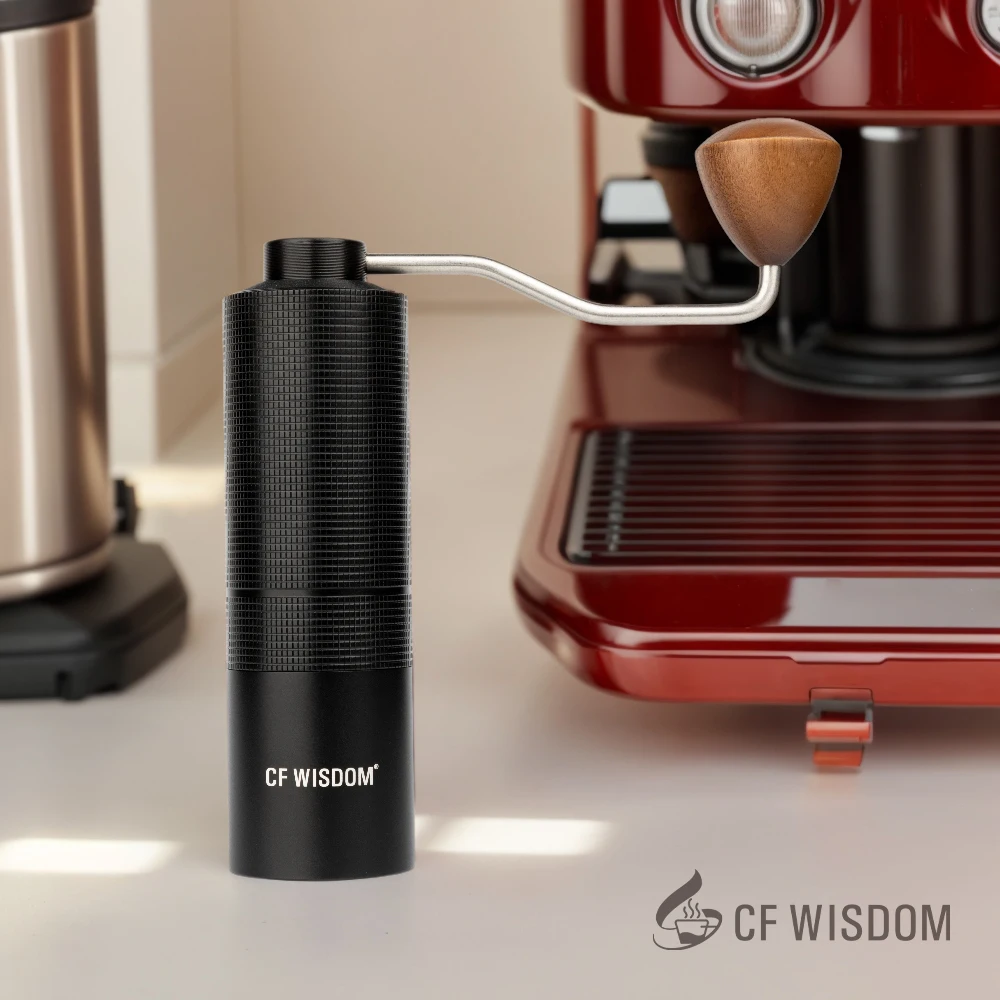
High-Altitude Camping (Above 5,000 ft/1,500m)
* Grind setting: Slightly coarser than normal
* Reasoning: Water boils at lower temperatures (as low as 92°C/198°F), reducing extraction efficiency
* Additional tip: Extend brew time by 30 seconds to compensate for lower temperature
Hotel Room Brewing
* Grind setting: Standard medium-fine
* Reasoning: Stable environment allows for consistent brewing
* Additional tip: Use bathroom tap water if filtered options aren’t available (it’s often filtered separately from kitchen water)
Beach/Hot Climate Brewing
* Grind setting: Medium to medium-fine
* Reasoning: Hot environments may require shorter brew times to prevent over-extraction
* Additional tip: Consider cold brewing overnight in your accommodations’ refrigerator
Winter/Cold Conditions Brewing
* Grind setting: Medium-fine to fine
* Reasoning: Heat loss occurs rapidly, reducing extraction efficiency
* Additional tip: Pre-heat your AeroPress with a small amount of hot water
For wilderness adventures, quality portable coffee grinders for camping are particularly valuable as they’re designed to withstand environmental challenges while maintaining consistent grind quality. Features like sealed bearings and robust construction prevent moisture and dirt from affecting performance in outdoor settings.
Remember that water quality varies dramatically by location—softer water extracts coffee differently than hard, mineral-rich water. If you notice unusual flavors, adjusting your grind can often compensate for water quality issues.
Troubleshooting Travel Coffee: Fixing Common Grind Issues
Even with careful preparation, coffee challenges arise during travel. Being able to diagnose and solve grind-related problems quickly can rescue your morning brew no matter where you are.
Problem: Coffee tastes sour, weak, or watery
* Diagnosis: Under-extraction, likely caused by too coarse a grind
* Solution: Grind finer for next brew; for the current batch, extend steep time by 30-45 seconds before plunging
* Alternative fix: Add slightly more coffee or use hotter water if available
Problem: Coffee is bitter, harsh, or difficult to plunge
* Diagnosis: Over-extraction, typically from too fine a grind
* Solution: Use a coarser grind next time; for the current brew, dilute with additional hot water after plunging
* Alternative fix: Reduce steep time or use slightly cooler water
Problem: Inconsistent results day to day
* Diagnosis: Grinder producing inconsistent particle sizes or user technique varying
* Solution: Check grinder burrs for alignment and clean thoroughly to remove coffee oils and particles
* Alternative fix: Standardize your process by counting exact turns when adjusting grinder settings
Problem: Coffee tastes flat or dull (but not bitter)
* Diagnosis: Coffee may be stale or grind size isn’t highlighting the beans’ best qualities
* Solution: Try a slightly finer grind to extract more flavor compounds
* Alternative fix: Purchase fresher beans or consider handheld coffee grinders for immediate grinding
When troubleshooting, change only one variable at a time to identify the true cause of the issue. With the AeroPress, the most common culprit for taste problems is indeed the grind size, making it the logical first adjustment to make.
Beyond Grind Size: Other Travel Brewing Variables
While grind size is foundational to great AeroPress coffee, it interacts with several other critical factors during travel brewing. Understanding these relationships helps you adapt when conditions aren’t ideal:
Water Temperature
* Standard recommendation: 80-85°C (175-185°F)
* Travel adjustment: For every 5°C (10°F) below ideal, grind approximately 10% finer
* Practical tip: When precise temperature control isn’t available, let boiling water sit for 30-45 seconds before brewing
Coffee-to-Water Ratio
* Standard recommendation: 15-18g coffee to 240ml water
* Travel adjustment: Stronger preference? Increase coffee by 10% rather than grinding finer
* Practical tip: Without a scale, use the AeroPress scoop (approximately 2.5 tablespoons) and fill to the appropriate circle marking
Brew Time
* Standard recommendation: 1:30-2:00 minutes total contact time
* Travel adjustment: Limited hot water requires shorter brew time with finer grind
* Practical tip: Count seconds or use a phone timer to maintain consistency
Stirring Technique
* Standard recommendation: Gentle 10-second stir after adding water
* Travel adjustment: More vigorous stirring can increase extraction with coarser grinds
* Practical tip: Pack a small, foldable stirrer rather than relying on plastic utensils
Fine Adjustment Hand Grinder, Precision Manual Grinder, Travel Coffee Grinder
Price range: $185.11 through $494.63 Select options This product has multiple variants. The options may be chosen on the product pageHand Burr Grinder, Hand Crank Coffee Grinder, Manual Espresso Grinder, Portable Coffee Grinder
Price range: $262.72 through $300.22 Select options This product has multiple variants. The options may be chosen on the product pageHandheld Burr Grinder, Manual Coffee Mill Grinder, Travel Coffee Grinder
$191.45 Select options This product has multiple variants. The options may be chosen on the product pageManual Coffee Grinder Stainless Steel, Manual Espresso Grinder, Travel Coffee Grinder
Price range: $276.22 through $276.39 Select options This product has multiple variants. The options may be chosen on the product pageHand Crank Coffee Grinder, Handheld Coffee Grinder, Manual Coffee Bean Grinder
$138.38 Select options This product has multiple variants. The options may be chosen on the product page
By understanding how these variables interact, you can compensate when conditions force compromises. For example, if you’re stuck with pre-ground coffee that’s too coarse, increasing the brew temperature and extending steep time can help achieve a balanced extraction.
Travel-Ready AeroPress Recipes with Optimal Grind Specs
Put your grind knowledge into practice with these travel-optimized AeroPress recipes designed to deliver excellent results in common travel scenarios.
Quick Hotel Room Brew (Total time: 1 minute)
* Grind: Medium-fine (similar to table salt)
* Method: Inverted
* Coffee: 18g (about 2.5 tablespoons)
* Water: 200ml at 85°C (185°F)
* Process:
1. Heat water using hotel kettle or in-room coffee maker
2. Grind coffee directly into inverted AeroPress
3. Add water, stir 10 times, and attach filter cap
4. Let brew for 45 seconds
5. Flip and press slowly for 15 seconds
* Why it works: The medium-fine grind extracts quickly with minimal equipment in stable hotel environments
Wilderness Strong Brew (Conservation of resources)
* Grind: Medium (slightly coarser than table salt)
* Method: Standard
* Coffee: 20g (about 3 tablespoons)
* Water: 150ml at highest temperature available
* Process:
1. Heat water on camping stove
2. Add coffee to AeroPress, then water
3. Stir vigorously for 15 seconds
4. Steep for 1:30
5. Press slowly for 30 seconds
6. Add additional hot water to taste (optional)
* Why it works: Concentrated brewing with a slightly coarser grind conserves water and fuel
Reliable Pre-Ground Recipe
* Grind: Use commercially available medium grind coffee
* Method: Standard
* Coffee: 15g (about 2 tablespoons)
* Water: 230ml at 80°C (175°F)
* Process:
1. Add coffee to AeroPress
2. Pour water about 30 seconds off boil
3. Stir gently for 10 seconds
4. Insert plunger slightly to prevent dripping
5. Brew for only 1:00
6. Press slowly for 20 seconds
* Why it works: Shortened brew time and slightly cooler water prevent over-extraction of pre-ground coffee
These recipes can be finely tuned using quality compact coffee mills that allow precise grind adjustment. Each recipe addresses specific travel constraints while delivering excellent coffee through strategic grind size selection.
Expert Tips for Maintaining Grind Quality During Travel
Keeping your coffee grinder performing optimally during travel requires attention to detail and proper maintenance. These expert techniques will help you preserve grind consistency regardless of your destination:
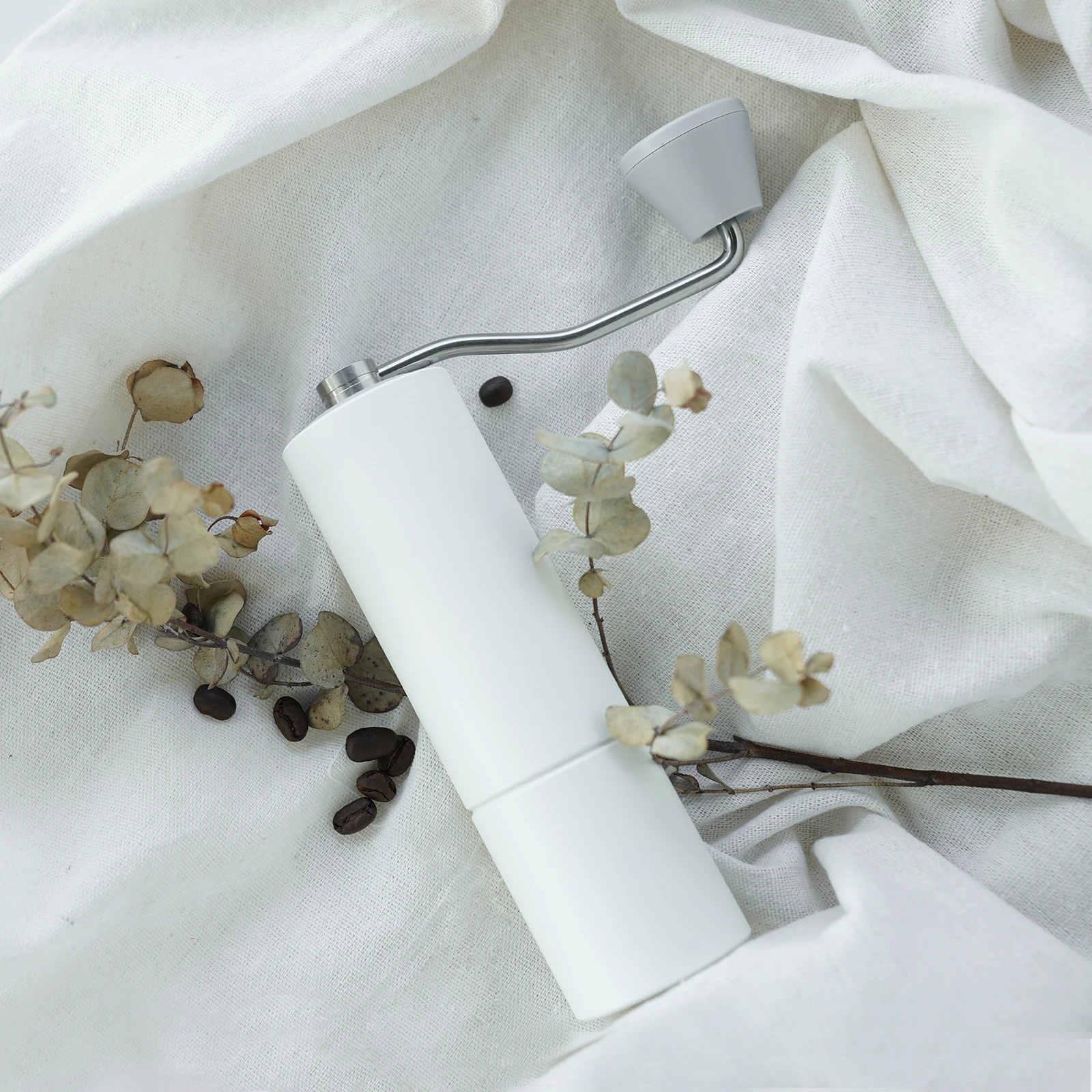
- Clean your grinder burrs regularly with a small brush to prevent oil buildup and ensure consistent particle size
- Store your grinder in a sock or soft pouch to protect against impacts during transport
- Calibrate your grinder settings before each trip by grinding a small sample and adjusting as needed
- In humid environments, keep silica gel packets near your coffee gear to prevent moisture absorption
- For longer trips, perform a deep clean halfway through using uncooked rice to absorb oils (discard the ground rice)
- When encountering poor water quality, opt for a slightly coarser grind and longer steep time to reduce unpleasant flavors
- Document your preferred grinder settings for different brewing methods using the number of “clicks” or turns from zero
The advantages of compact coffee grinders for travel become especially apparent over longer journeys. Their ability to deliver consistent grinding performance in various environments ensures your coffee quality remains high regardless of external factors.
For multi-week journeys, consider bringing a small maintenance kit: a miniature screwdriver, tiny brush, and microfiber cloth. This allows for quick adjustments and cleaning without significant weight or space penalties.
Is It Worth the Effort? The Rewards of Perfect Travel Coffee
Taking the time to master your AeroPress grind size for travel unlocks a level of coffee enjoyment that dramatically enhances your journeys. Rather than settling for instant coffee or overpriced hotel offerings, you gain the ability to create moments of perfection anywhere in the world.
Imagine waking up to witness a spectacular sunrise in a remote location, AeroPress in hand, brewing a cup that rivals your favorite local café. Or picture yourself in a bustling foreign city, starting your day of exploration with familiar comfort despite being thousands of miles from home. These experiences become possible when you’ve mastered your travel coffee technique.
Beyond the sensory rewards, there’s something profoundly satisfying about self-sufficiency—carrying the tools and knowledge to create your perfect cup regardless of external circumstances. Your travel coffee ritual becomes a grounding practice, a moment of mindfulness amid the unpredictability of travel.
The skills developed through refining your grind size and brewing technique don’t just make better coffee—they foster deeper appreciation for the entire coffee experience. From bean origin to brewing science, you’ll find yourself engaging more meaningfully with local coffee cultures wherever you go.
Whether you’re a business traveler seeking consistency in hotel rooms or an adventurer brewing at alpine base camps, the perfect AeroPress grind transforms ordinary coffee moments into extraordinary experiences that enhance your entire journey.

